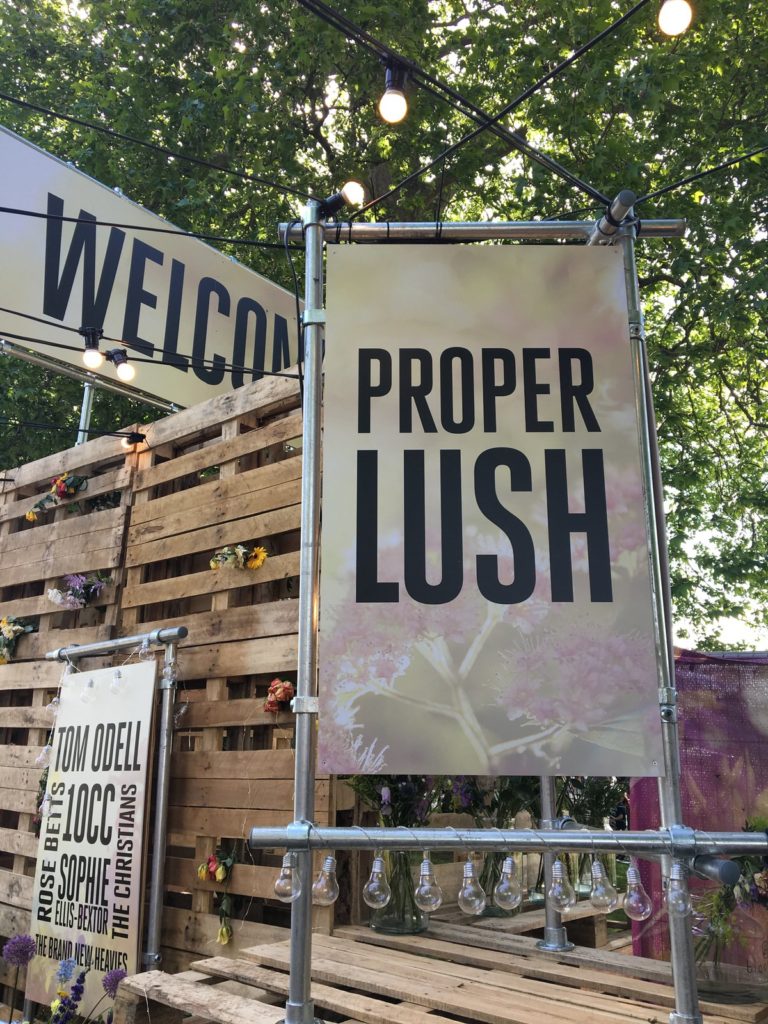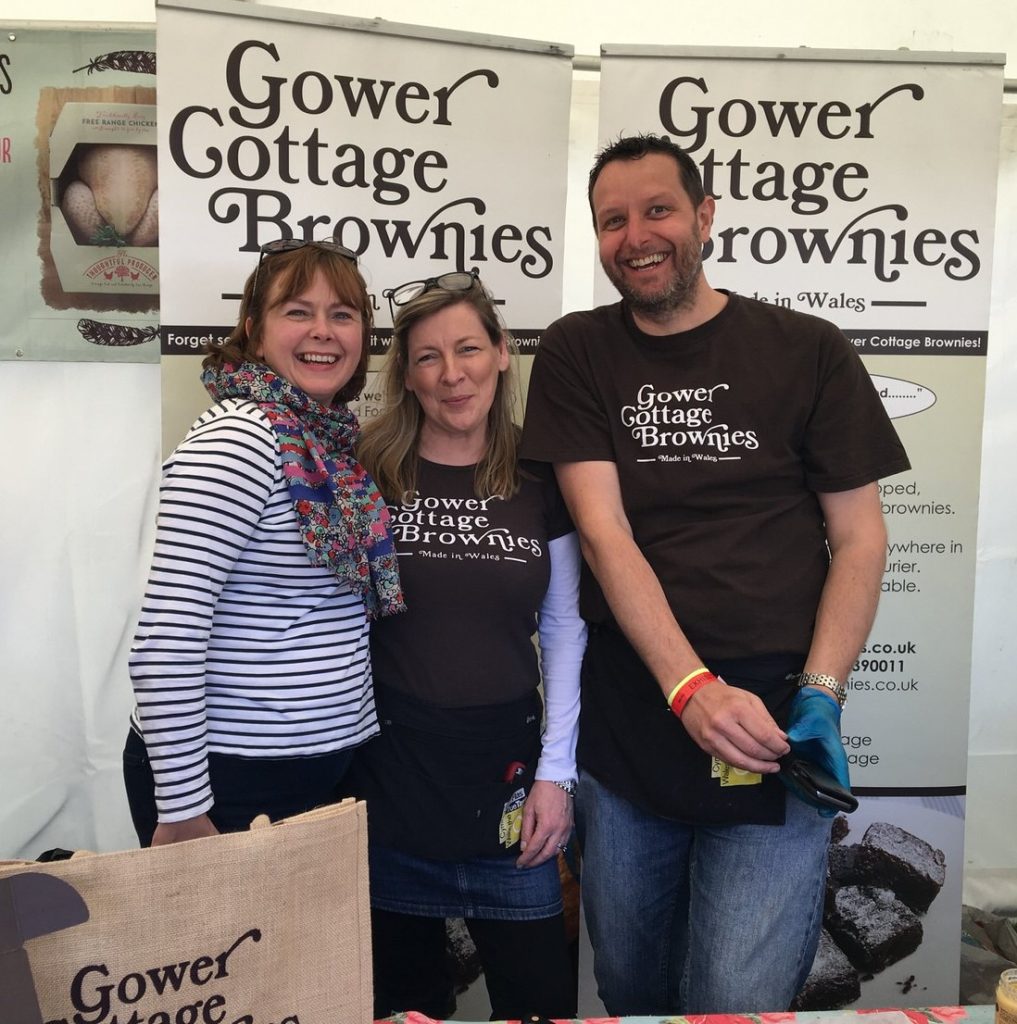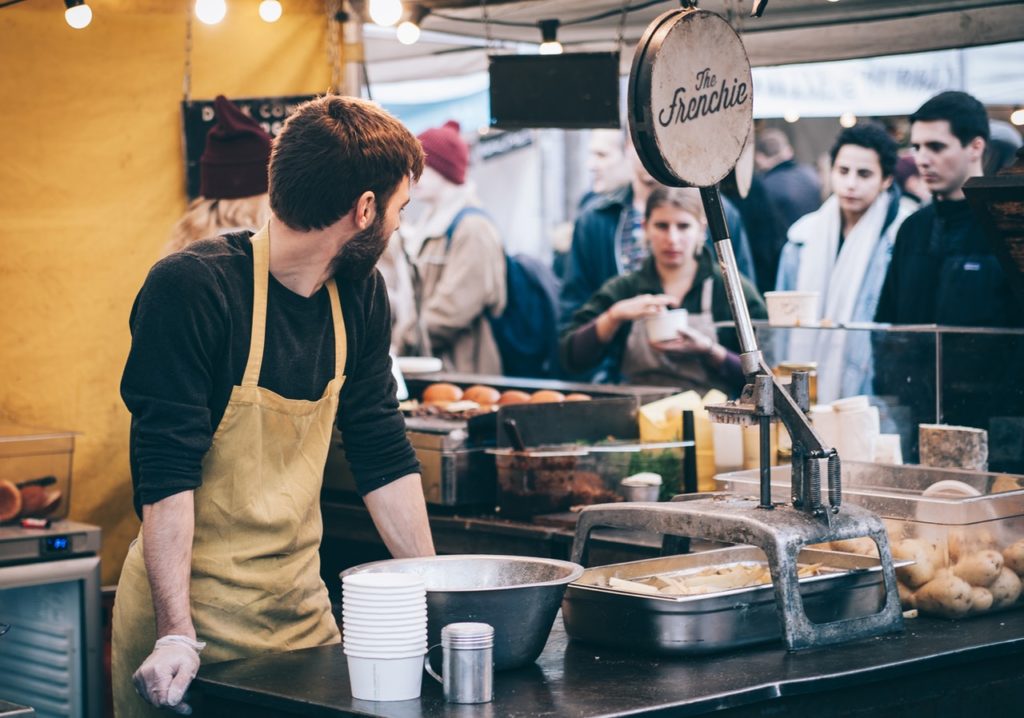With some of the Pub in the Park events already done and with Glastonbury kicking off tomorrow, we are well into the season of festivals, food and otherwise. For a small business, they’re a brilliant opportunity to get to talk directly to customers. You’ll get to hear their positive feedback, and the objections they put up to buying what you do.
None of this comes cheap though.
If you’re going to invest the time, effort and hard cash in doing any of these events, then you really want to make sure that you absolutely make the most of every moment. And in every moment there’s an opportunity to create engaging content. So, how do you max out the opportunities?
Follow a great example
When I was thinking about this, then I thought that you just need to do what Kate does. Kate Jenkins of Gower Cottage Brownies is an expert at this. I’ve followed #KateOnATrain and its many tales, I’ve seen the prep stage for events, what’s going on during the events, the fun stuff and mishaps. You really could do worse than watch and learn from Kate.
So, where to start?
Before you do anything, remind yourself what works for your customers. What gets them excited about what you do? What starts a conversation? Or just makes them laugh?
Think about the things you stand for as a brand, and what you want to be known for. And then get ready to make the most of your investment.
Before the event
Of course you could just rock up on the day of the festival and hope people find you. Or you can take people with you as you get ready. Here’s things to do in as part of your build up:
1. Email your list
These are your warmest contacts, the people who have already shown interest in what you do. They might already be buying from you. There’s a strong chance that they’re the people who would want to come and see you. It could be that they take it as a good sign that you’re going to be exhibiting at a particular food festival, it might convince them to go, because you are.
2. Make them an offer
You can have some fun with this. Kate’s Gower Cottage Brownie hessian bags are quite legendary, so she could offer a prize for the first person to turn up with one. Or the first 10 people.
The reward is up to you. But make the most of this. Make up your own hashtag. Put it in your email and then your social channels. You can use written content, but also lends itself to photos and Boomerangs, any kind of video really.
Or you could make a subscribers only show offer with a secret password. Your content is then about the secret. Lots you can do, none of which has to be hugely expensive.
3. Show the preparation
We’re all a bit nosy, dressed up as being curious. So show people what goes into making your product. This is an ideal moment for video content, even go for something like a time-lapse video of your product coming together. It could be the design process for your stand, showing it from sketches through to development.
4. Start the countdown
You’ve got ideal opportunities for regular content as you get closer and closer to the event. Yes, even down to the journey there. Warts and all. Couriers that don’t turn up. Arrangements that don’t work. It doesn’t have to be perfect. The human side of the story is so key.
5. Make and use the hashtags
I doubt there’s an event these days that doesn’t have a hashtag. Start using them early to give people a chance to discover you as they prepare for their own visit. There’s also the likelihood of the organisers looking out for content and so might give you further exposure.
Or, do what Kate does, and make up your own. Of course it’s harder to get traction, but the right one, with the right story, can just capture the imagination. I mean #KateOnATrain has nothing to do with brownies, but it’s definitely part of the brand story.
6. Write a blog post, or several
If you have a blog, then write a post and tell people all about it. You can talk about the preparation, why you love this particular show, or why you’re exhibiting there for the first time. If you’re launching new products then you can start teasing those. And then push it out through your social channels.
During the event
You’re hoping to be run off your feet, with the tills ringing. But live events give you the opportunity to generate content which delivers value on the day and beyond. And, unless you’re very lucky, every event has some dead time so use it to drum up more interest.
This is quite a list, and you don’t have to do them all. Know where your customers are, and what they engage with, and then make the most of those.
1. Live on Twitter
Perfect for in the moment updates, Twitter comes into its own at live events. Tweet about where you are in the event space. Tweet about, and tag, your neighbours and other exhibitors. Share pictures of the stand, so people know what they’re looking for.
Show the people who are working on your stand. The people who are visiting your stand. Host a tweet-up (I can remember Kate doing this at a show when we first met, about 15 food bloggers all there at once. Imagine the tweets that followed).
Follow the event hashtag and retweet other people’s tweets. Generosity costs you nothing except your time.
2. Instagram impact
As with Twitter, you can make the most of visual content and text on Instagram. You also should be leveraging the immediacy of Instagram Stories and IGTV, as content will be all around you.
Record and speed up the journey from the entrance to your stand. Short, snappy videos of what’s going on. Interview customers and get their thoughts on what you do, particularly if they’re tasting your products for the first time. If you’ve got people who are repeat customers, then ask them to talk about why.
3. Photograph and video everything
Even if you don’t post them on the day, take plenty of photos and videos now, as you can come back to them after the event. Collect selfies (Kate is brilliant at this), show the build up, and the breakdown. Busy scenes look great in time-lapse videos, and act as a great summary of the event. There’s a great tutorial on that here from iPhone Photography School. Hang onto everything for now.
4. Collect people
This is too good an opportunity to miss to get people to sign up to your mailing list. But in a post GDPR world then you have to think about how you do this. Ideally have a tablet set up for sign ups, so that the usual opt-ins can be completed. You’ll probably find your current email marketing provider has a template that works well for this.
Make sure you have a specific follow up automated sequence running that thanks them for coming to your stand at XYZ event. Tagging this list means you’ll know which event you met them at, then if you attend the next year you can send them targeted email to remind them that you met there last time. Also worth tagging if they bought from you or not.
After the event
Hopefully you’ve come back with no products left, orders coming in before you arrive home, and a growing email list. It might be you’re on a bit of a treadmill of back to back events at this time of year, so having some of this set up and ready to go will make it easier.
Some of it does depend on a bit of time spent creating from the content you’ve gathered, but is also likely to get people’s attention. If they’ve enjoyed an event, then they’ll probably enjoying reliving bits of the event.
1. Make a photo collage
Or a video one, or a photo slideshow. There are plenty of apps and tools online to help you do this relatively quickly and easily. Check the format requirements for each of your social channels, then get creating. It’s a good chance to say thank you to those who stopped by, and to tell people where you’ll turn up next.
2. Look out for other people’s content
Keep following the hashtags and see what content is generated. Then share and comment on appropriately.
3. Write another blog post
You can show people what they missed out on, and help people to remember what they did. It’s also a chance to talk about the event, particularly if it’s a newer one. Give your customers reasons to think about booking the next time the event comes around.
Even if it’s something well-established like the Good Food Show then you can give your perspective on it. Maybe you’ve exhibited for a number of years, so you can talk about changes and improvements that you’ve seen. It might help someone consider coming back again.
4. Follow up
This is the perfect time to check in with people you met. If you’ve tagged your list and you know they bought from you, then you can ask them what they thought, maybe even make them an offer for their next purchase. At the very least you could get some nice testimonial quotes.
If people signed up to join your mailing list but didn’t try on the day, then what can you entice them with? Perhaps you can repeat your show offer for a limited time only for those people. It might be that your products are heavy, and they felt they already had too much to carry, or they’d spent the budget they’d set themselves. Follow up in a timely manner while they still remember you.
This isn’t an exhaustive list, and appreciate it’s a lot to take in. There’s a quick checklist of these available as a download here.
And if you’re not at food festivals or food isn’t your business, then this is still relevant. These things still work for consumer events whether you’re making beauty products or selling paintings.
As with all things, a bit of upfront thinking and planning will go a long way to making this simpler to execute. Make choices as well, about what you are going to do. Remember first and foremost, what do your customers want to see and hear from you.
And if in doubt, ask yourself “what would Kate do?”.
What works best for you at live events? What did I miss? I’d love to know.






